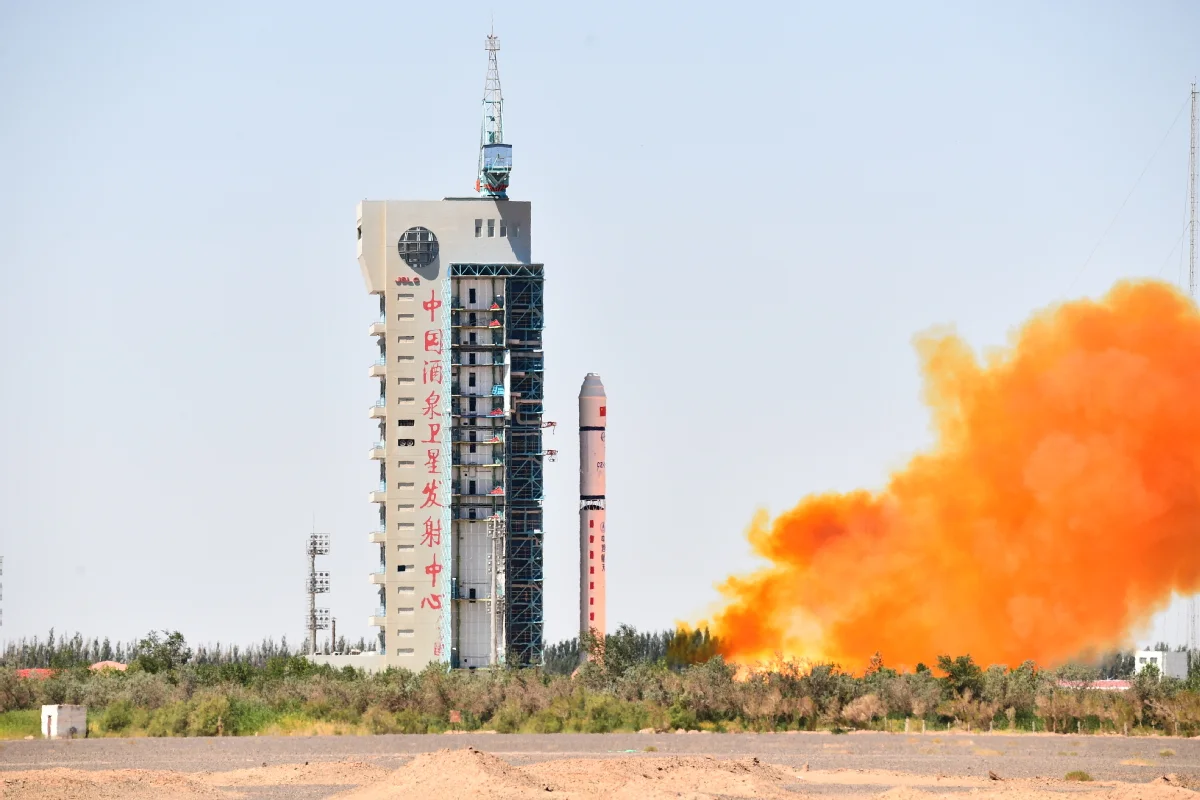Long March 6A rocket has orbital debris problem
- July 12, 2024
- 0
The upper stage of China’s Long March 6A rocket appears to be producing a large number of pieces of space debris, adding to the orbital debris problem. The
The upper stage of China’s Long March 6A rocket appears to be producing a large number of pieces of space debris, adding to the orbital debris problem. The

The upper stage of China’s Long March 6A rocket appears to be producing a large number of pieces of space debris, adding to the orbital debris problem. The latest Long March 6A blasted off from a specially designed launch pad at Taiyuan Space Center on July 4. The 50-meter-tall, 530-metric-ton rocket has two kerosene-oxygen stages and four solid-fuel side boosters.
The rocket developed by the state-run Shanghai Academy of Space Flight Technology (SAST) successfully placed two Tianhui-5 (02) remote-sensing satellites into sun-synchronous orbits at an altitude of about 600 kilometers.
S2a Systems, a Swiss company that develops and operates specialized systems for optical space surveillance worldwide, has discovered a number of objects around the upper unit of Long March 6A. The nature and cause of the debris are unknown. This may be due to stage passivation or damaged insulation.
The U.S. Space Force’s space awareness did not record any debris associated with the upper unit, indicating that the objects were very small. S2a systems note that such object clouds were not visible when other rockets launched.
Despite their small size, the objects will be moving at about seven kilometers per second and pose a threat to spacecraft. SAST has been contacted for comment. S2a systems also detected about 60 objects circling the top of Long March 6A, which launched in late March.
Space debris is becoming an increasingly urgent problem, potentially threatening satellites, spacecraft and space stations. The latest data on space debris estimated by ESA’s Space Debris Office in June this year shows that there are 40,500 space debris objects larger than 10 centimetres in orbit and 1,100,000 objects between 1 and 10 cm in size.
According to ESA statistics, there have been more than 640 breakups, explosions, collisions or anomalous events resulting in fragmentation. Agencies, companies and others are developing approaches to deal with orbital debris and prevent its consequences. The apparent challenge of Long March 6A highlights how commercial organisations are helping with situational awareness in space. Amateur astronomers and radio amateurs are also helping to monitor major cosmic events.
This week, missions were affected by several high-level issues. During the first launch of the Ariane 6, an issue occurred that prevented the launcher’s upper stage from re-igniting, affecting plans to terminate the mission.
China’s commercial Hyperbola-1 rocket lost its payload after its fourth stage experienced an anomaly in late July on July 10. On July 11, the booster engine of the Falcon 9 rocket failed, leading to the potential loss of a batch of Starlink satellites.
China has launched six Long March 6A missiles. The first was launched in March 2022. The second flight in November of the same year turned into a debris cloud on top. The launch vehicle is the first in China to combine new Chinese kerosene, liquid oxygen and solid fuel. The 3.35-meter-diameter missile bears little resemblance to the standard 2.25-meter Long March 6 missile. More Long March 6A launches are planned in the coming months.
China also unveiled the Long March 6C in May this year. This rocket uses a 6A base stage without side boosters. According to CASC, SAST’s parent company and China’s prime space contractor, the country plans to conduct about 100 launches this year. About 30 of these are planned by commercial launch service providers.
Source: Port Altele
As an experienced journalist and author, Mary has been reporting on the latest news and trends for over 5 years. With a passion for uncovering the stories behind the headlines, Mary has earned a reputation as a trusted voice in the world of journalism. Her writing style is insightful, engaging and thought-provoking, as she takes a deep dive into the most pressing issues of our time.